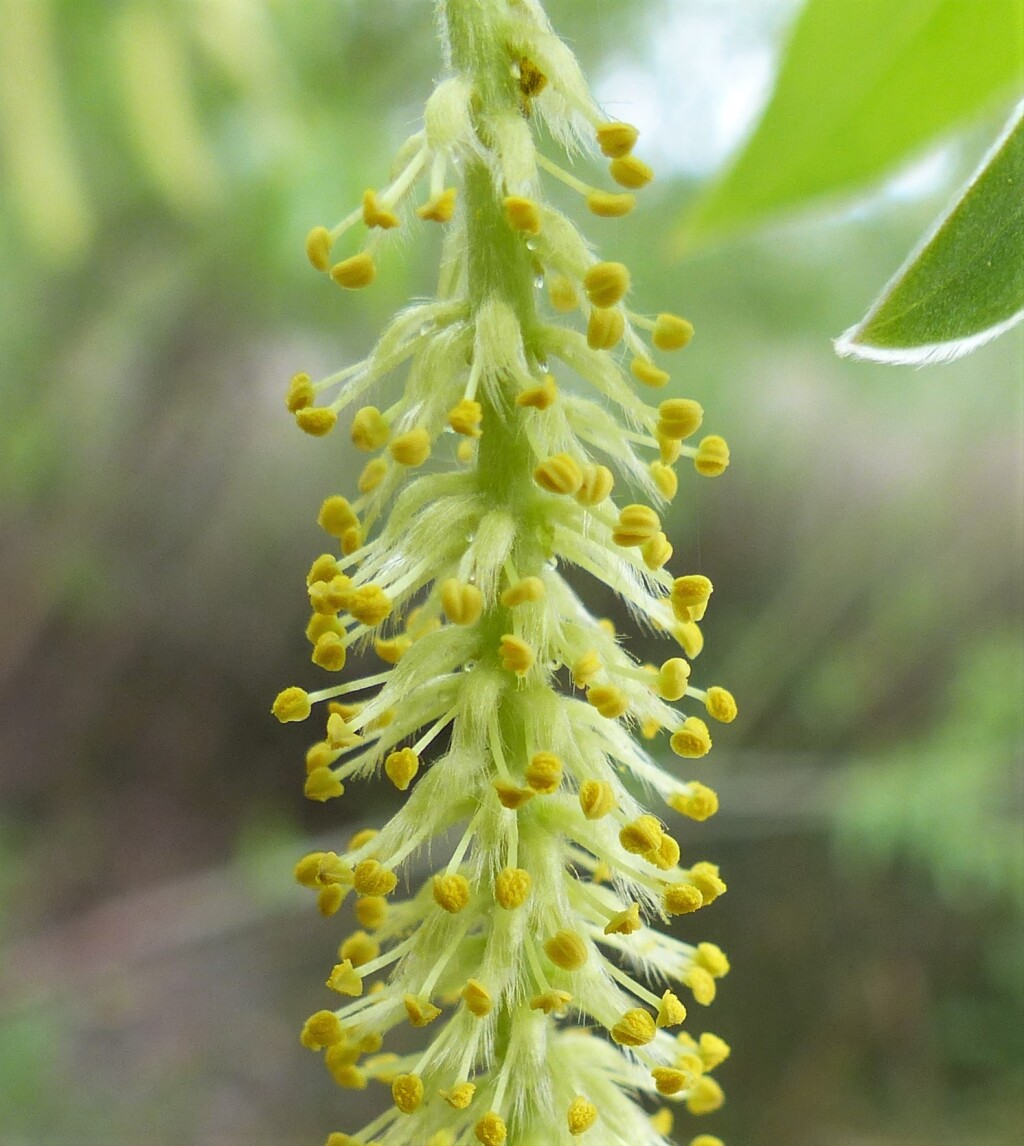Salix ×fragilis
L.Spreading tree to 18 m high or more; trunks short, thick, 1–several; bark pale grey-brown, ultimately dark brown, coarsely and deeply fissured; branches erect to spreading or slightly weeping; twigs lustrous, olive-green, brownish-green to orange-yellow or dark red, moderately fragile to very brittle at point of attachment; buds initially pale yellow-green, ultimately brown, more or less glabrous or somewhat appressed-sericeous. Leaves narrow-lanceolate to ovate, rarely elliptic, 5.5–18.5 cm long, 1.5–4.5 cm wide, at first appressed-sericeous on both sides, soon glabrous and deep lustrous green above, finally glabrous and glaucous or glaucescent below; apex acuminate to long-acuminate; base cuneate, sometimes rounded; margins glandular-toothed, sometimes minutely so; stipules caducous, narrow, caudate-acuminate or acuminate, 2–9 mm long; margins glandular-serrate, upper surface with few to numerous sessile glands. Catkins spreading or erect, produced on short leafy lateral shoots; male catkins cylindric, 4–8 cm long, 0.7–1.3 cm wide; catkin-scales 2–3.5 mm long, pale yellow-green; stamens 2 (rarely 3), filaments free, pilose at the base; female catkins 5.5–8 cm long (up to 11 cm in fruit), c. 7 mm wide, catkin-scales generally larger than in males, caducous; ovary subsessile or minutely stalked, 2.5–4 mm long, flask-shaped, tapering to a narrow apex. Capsule 4–5 mm long.
VVP, VRiv, MuF, GipP, OtP, WaP, Gold, CVU, NIS, EGL, EGU, HSF, HNF, Strz.
A hybrid taxon involving Salix alba and Salix euxina I.V.Belyaeva (Belayaeva 2009). 2 nothovars naturalised in Victoria.
 Spinning
Spinning